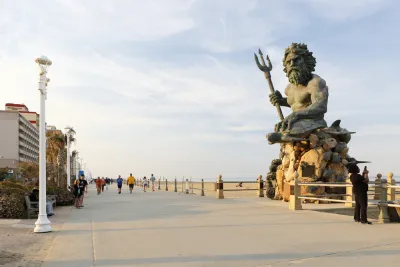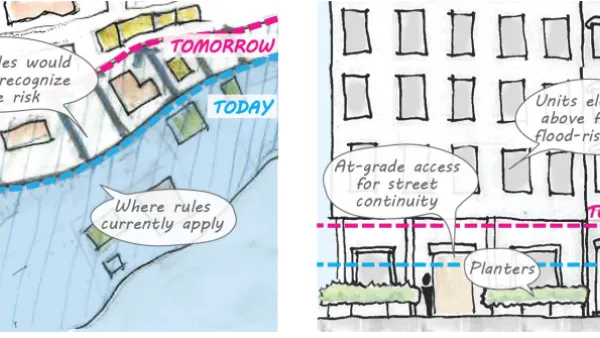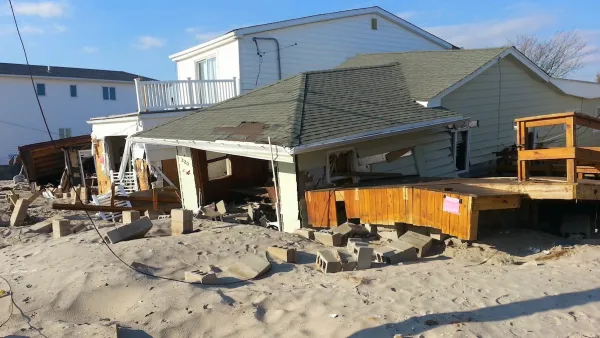Only a few places have managed to stem the tide of development in areas at risk to the effects (like wildfire and flooding) of climate change. Virginia Beach is an early test bed for what it takes to tell developers "no."

Christopher Flavelle and John Schwartz report from Virginia Beach, where the city recently became a leader in climate-aware development restrictions—i.e., saying no to developers proposing buildings on land at risk of flooding from sea-level rise and extreme weather.
The city last year became one of a small but growing number of communities willing to say no to developers — despite their political and economic clout — when it rejected a proposal to build a few dozen homes on this soggy parcel of 50 acres, arguing that those homes would be unsafe. The developers sued, accusing officials of making their project a scapegoat as voters clamored for action after disastrous flooding.
This past May, a judge ruled that Virginia Beach was within its rights to stop the development. The city’s experience could become a harbinger for others nationwide.
According to the article, the confrontation between Virginia Beach and this developer is emblematic of many future, similar conflicts, the outcomes of which will determine the vulnerability of Americans to climate change in the future. The recent track record of this conflict has favored developers and introduced risk to many communities:
In many coastal states, homes are going up at the fastest rate in the most flood-prone areas. The number of new houses in what experts call the wildland-urban interface, where the wildfire threat tends to be greatest, increased 41 percent nationwide between 1990 and 2010.
A recent report from the Pew Charitable Trusts provides additional background for the this feature-length story. The "Mitigation Matters: Policy Solutions to Reduce Local Flood Risk" report is available online.
FULL STORY: As Climate Risk Grows, Cities Test a Tough Strategy: Saying ‘No’ to Developers

Analysis: Cybertruck Fatality Rate Far Exceeds That of Ford Pinto
The Tesla Cybertruck was recalled seven times last year.

National Parks Layoffs Will Cause Communities to Lose Billions
Thousands of essential park workers were laid off this week, just before the busy spring break season.

Retro-silient?: America’s First “Eco-burb,” The Woodlands Turns 50
A master-planned community north of Houston offers lessons on green infrastructure and resilient design, but falls short of its founder’s lofty affordability and walkability goals.

Test News Post 1
This is a summary

Analysis: Cybertruck Fatality Rate Far Exceeds That of Ford Pinto
The Tesla Cybertruck was recalled seven times last year.

Test News Headline 46
Test for the image on the front page.
Urban Design for Planners 1: Software Tools
This six-course series explores essential urban design concepts using open source software and equips planners with the tools they need to participate fully in the urban design process.
Planning for Universal Design
Learn the tools for implementing Universal Design in planning regulations.
EMC Planning Group, Inc.
Planetizen
Planetizen
Mpact (formerly Rail~Volution)
Great Falls Development Authority, Inc.
HUDs Office of Policy Development and Research
NYU Wagner Graduate School of Public Service




























